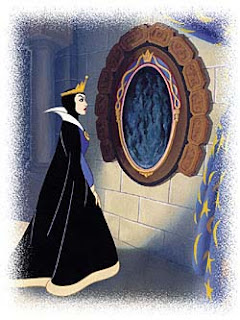 |
| The bloom of essence. |
There’s an inherent danger in wrongly understanding the two facets of our virtual and non-virtual sides. The non-virtual side is easy to perceive. We are immersed in that side as fish are in the water. And yes, without being aware, there is a virtual side to all of us.
“Virtual,” in this sense, means almost as described, but not wholly: Not essential. It’s tempting to focus on one side at the exclusion of the other. When The Buddha first passed on the teachings of the real (Atman/our True Self) and the unreal (anatman/our imagined self), this same misunderstanding arose. Orthodox Buddhism denies the existence of Atman/the true Self, claiming that everything is null and void, arguing one side but denying the other, which Nagarjuna nailed as nihilism yet to deny the ego/virtual, results in eternalism.
This argument is counter to the premise of dependent origination, which is foundational to Buddhism as well as the teachings of The Buddha himself. The obvious point missed in this misunderstanding is that emptiness (the ineffable nature of the Self) is itself empty (non-empty and thus non-dual). Does the true Self exist? Nagarjuna would answer yes and no—the Middle Way. If the essence of Self exists, then nobody, except the true Self, would know without the counterweight of anatman. We only know by way of comparison and our perceptual capacities that adhere to anatman.
In the Western world, we were reared under the rule of law that says that if something is one way, it can’t be another way. The world is either black or white. If it is black, then by definition, it is not white (and the reverse). Nagarjuna—father of Mahāyāna Buddhism destroyed that comfort zone. We want things to be independent, discrete, separate, and tidy. If I am right, then you must be wrong.
Our entire Western world functions as a subset of that logical premise, established by Aristotle with his Principle of non-contradiction (PNC): The assertion that if something is conditionally “B,” it can’t be “A” at the same time, in the same place. That conditional principle underscores our sense of justice, ethics, legal system, and everything else. It defines the contemporary problems that lead to vast irresponsibility and abuse all the way from interpersonal relations to environmental destruction. The PNC is inconsistent with the interconnectedness of life.
The fact of the matter is that nothing fits with the desire of “is” or “is not.” Mahāyāna Buddhism teaches The Middle Way—that nothing is independent, discrete, and separate. Rather everything arises interdependently. One side (to exist) requires another side. This notion of dependent origination/relativity is the natural manifestation of emptiness (Śūnyatā), which states that nothing contains an intrinsic substance, which is to say that reality exists in two, inseparable dimensions at once, that Nagarjuna labeled Conventional and Sublime or in his teaching on Essence and Non-essence. Importantly he did not say that essence does not exist. Nor did he say that non-essence exists. What he did say is that these two live interdependently. They are mirror images of one another, and neither can exist without the other (much less be fathomed). These are just alternative names we use to represent form and emptiness, which The Heart Sutra says is a single, indivisible reality.
Is there a self (anatman/ego)? A Self (Atman)? These concepts are abstractions and fabrications. The Mahāyāna Mahāparinirvāṇa Sūtra directly addresses the question and says, without equivocation, that the Self is just another name for Buddha-dhatu/the true immaculate Self—the only substantial reality. It stretches the definition of a Buddhist to deny Buddha-nature. It also says that self (conceptual/ego) is an illusion—that we all create (a fabrication) to identify our ineffable true nature.
Modern neurology confirms this intuitive insight revealing that the ego is a sort of hologram which serves the purpose of separating ourselves from others, and this separation is, like the ego concept, which creates it, an illusion. The Sūtra further says that the Tathagata (the Buddha—our true Self-nature) teaches with expedient means by first teaching non-self as a preliminary to teaching the true Self. The logic of that progression is nothing short of brilliant. Until such time as we wrestle with and defeat ego/self, we are not going to come to terms with our essential Self-nature. We will hold on until the death with “Me-ism.”
Science is a marvelous tool but is limited to measurability. Yet no one has ever been able to measure the true mind (much less even find it), which according to numerous Buddhist texts, is the Buddha. We have come a long way over the centuries and can measure things today, not even imagined previously. Does that mean that reality comes and goes according to the capacity of tools? NO! Truth stands alone and is not conditioned by progress, however marvelous.
To read the details of Nagarjuna’s perspective on how essence and non-essence depend upon each other, go to—On Examination of Essence; The Fundamental Wisdom of the Middle Way: Nagarjuna’s Mūlamadhyamakakārikā (Treatise of the Middle Way).
After all, is said and done, the bottom line is to not be so heavenly minded that we are of no earthly good. Our egos/virtual reality and our True Self/true reality come as a package deal. It is impossible to separate the two (which are One). The important thing is to be continuously aware of the eternally, indwelling spiritual Self of love, and accept with gratitude that our virtual selves originate and function there as a result.
“If the day and the night are such that you greet them with joy, and life emits a fragrance like flowers and sweet-scented herbs, it is then more elastic, more starry, more immortal—that is your success.” Henry David Thoreau
![Reblog this post [with Zemanta]](https://img.zemanta.com/reblog_e.png?x-id=9997239f-775b-45e6-a17f-db5df149ee3f)









